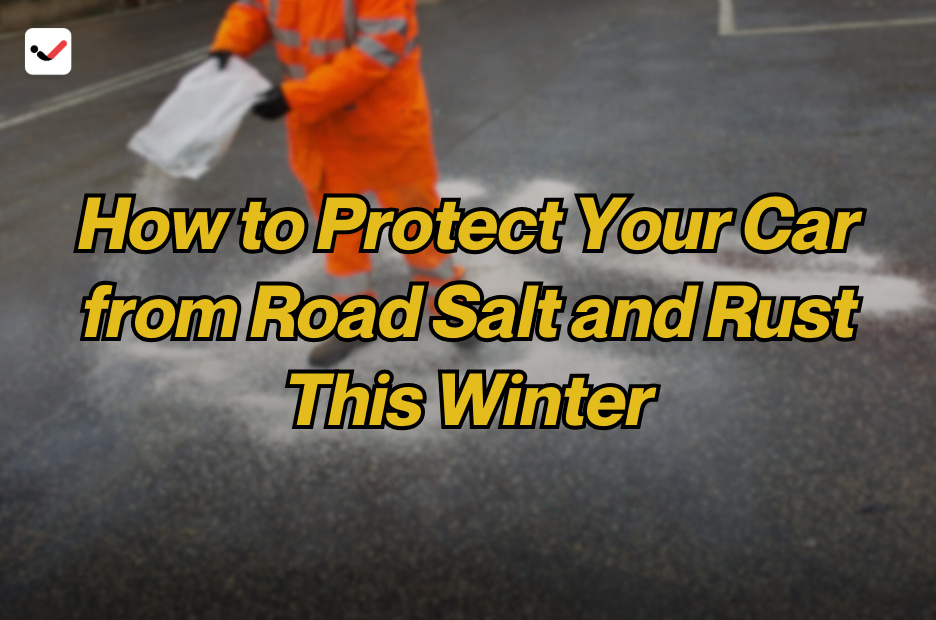How to Protect Your Car from Road Salt and Rust This Winter
How to Protect Your Car from Road Salt and Rust This Winter

When winter arrives, so do icy roads, snowstorms, and freezing temperatures. Cities and towns often spread road salt to melt the ice and keep roads safer for drivers. While this helps prevent accidents, it can take a serious toll on your car. Salt is corrosive and can cause rust, especially on your vehicle’s undercarriage, wheel wells, and body panels. If left unchecked, this damage can shorten the life of your vehicle and lead to expensive repairs.
Taking steps to protect your car from salt damage in winter is not just about keeping it looking good—it's about maintaining its performance and value. Whether you drive a brand-new SUV or an older sedan, every vehicle is at risk once road salt starts covering the streets. The good news is that a few simple habits and preventive measures can go a long way in keeping rust and corrosion away.
1. Wash Your Car Regularly
One of the easiest ways to protect your car from road salt is to wash it regularly during winter. Aim for a car wash every 10 days or after any heavy snow or slushy weather. Salt tends to stick to your car’s surface and underneath, which is where rust begins to form. Washing helps remove the salt before it can do any harm.
Focus on getting a car wash with undercarriage cleaning. The underside of your car is most exposed to salty slush and puddles. Make sure to use a touchless or soft-cloth wash that won’t scratch the paint. Even better, wash your car on days when temperatures are above freezing so water doesn’t freeze in locks or door seals.
2. Apply Wax Before Winter Starts
Applying a good coat of car wax before the cold months hit gives your vehicle a protective layer against salt and grime. Wax acts like a barrier between your paint and the elements. Choose a high-quality wax with polymer protection and apply it in late fall or early winter.
If possible, apply a second coat of wax halfway through winter. This extra step boosts protection during the harshest months. Also, consider adding a ceramic coating for even stronger resistance. Ceramic coatings last longer than wax and are especially helpful in areas with heavy snow and salt.
3. Use a Rust-Proofing Treatment
Getting your vehicle rust-proofed is one of the best things you can do to fight corrosion. Rust-proofing sprays or treatments are applied to the underbody and other vulnerable areas. There are different types of rust protection, like oil-based sprays and electronic rust inhibitors. Oil-based sprays tend to be more effective for protecting against road salt.
Many auto shops offer professional rust-proofing services, but there are also DIY kits available. If your car is older or already showing signs of rust, it’s not too late. Rust-proofing can help slow down the spread and protect what's still intact.
4. Check and Clean Wheel Wells
Your wheel wells get splashed with salt every time you drive in the snow. These areas are often overlooked, but they’re key spots where rust forms. Make a habit of cleaning out your wheel wells with a hose or pressure washer after driving in salty conditions.
You can also apply rubberized undercoating spray inside the wheel wells for extra protection. This coating helps block moisture and salt from reaching the metal surface. Inspect the area regularly and touch up any worn-out coatings.
5. Keep Floor Mats Clean and Dry
Salt doesn’t only affect the outside of your car. It gets inside too—on your shoes, boots, and clothes. As it builds up on the floor, it can soak into the carpet and metal underneath, causing interior rust and corrosion.
Use all-weather rubber floor mats during the winter. These mats trap salt, water, and mud so they don’t get into your car’s flooring. Clean the mats weekly and wipe down any wet spots inside your car. Keeping your interior dry helps avoid hidden rust problems.
6. Park in a Garage or Covered Area
Parking your car in a garage or covered space helps reduce exposure to snow, ice, and road salt. If you have a garage, make sure it’s well-ventilated. Moisture can build up in a sealed space, which also leads to rust. Leave the garage door slightly open or use a dehumidifier if needed.
If a garage isn’t available, consider using a car cover made for winter weather. These covers block snow and salt spray, especially if your vehicle is parked on the street or driveway. Just make sure the car is clean before putting on the cover to avoid trapping salt underneath.
7. Inspect for Rust Often
Don’t wait for rust to become a major issue. Check your car regularly, especially during and after winter. Look at the edges of doors, wheel wells, underbody, exhaust pipes, and around the trunk. Catching rust early allows you to fix it before it spreads.
Use a flashlight and check underneath the car too. If you see bubbling paint, flaking metal, or orange-brown spots, take action. Clean the area and apply rust converter or paint sealant. For larger spots, it’s best to let a professional handle it.
8. Avoid Driving Through Deep Snow and Slush
Driving through deep slush can splash large amounts of salty water into areas that are hard to clean. When possible, avoid driving through deep snowbanks or puddles, especially near intersections or curbs where salt builds up.
Stick to well-plowed roads and maintain safe distances from other vehicles to reduce spray. After any long or messy drive, try to rinse your car the same day or the next to remove salt before it sticks too long.
9. Keep an Eye on Brake and Fuel Lines
Brake lines and fuel lines are often made of metal and are located under the vehicle—making them prime targets for salt corrosion. A rusted brake line can lead to dangerous failures. Have your mechanic inspect brake and fuel lines during routine service or oil changes in winter.
If you live in a snowy area, ask your mechanic to spray a protective coating on these lines. This small step can prevent a major breakdown or safety issue down the road.
10. Use Anti-Rust Sprays at Home
There are many DIY anti-rust sprays you can use at home to give extra protection to exposed areas. These sprays are usually oil-based and easy to apply. Spray them on the undercarriage, around wheel wells, and inside any drain holes or seams.
Apply a fresh coat every few weeks or after a wash to keep the protection strong. Always wear gloves and follow the product directions for best results.
Winter driving conditions make salt and rust a real concern for your car. But with regular care, smart habits, and the right products, you can keep your car safe and strong through the season. Focus on washing, waxing, rust-proofing, and inspecting your vehicle throughout winter.
By following these steps, you protect your investment, avoid costly repairs, and make sure your vehicle stays reliable for years to come. Don’t wait until you see rust—start now, and your car will thank you later.

